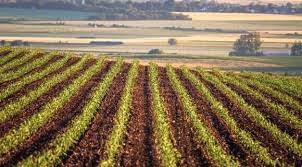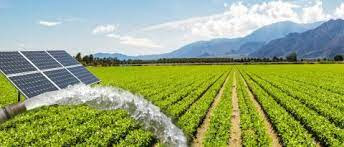Crop rotation is a time-tested agricultural practice involving systematically planting different crops in a specific sequence on the same land. This age-old technique is gaining renewed attention in modern farming systems due to its numerous benefits for agricultural productivity and environmental sustainability. In this article, you will learn Benedict t palen Jr s view on how crop rotation is associated with sustainable farming and its impact on soil health, pest management, nutrient cycling, and overall farm resilience.
The fertility of the soil health
Crop rotation is vital in maintaining and
enhancing soil health and fertility. Different crops have varying nutrient
requirements, growth patterns, and root structures. Farmers can mitigate
nutrient imbalances by rotating crops and reducing the risk of nutrient
depletion in the soil. For instance, leguminous crops like soybeans or peas can
fix atmospheric nitrogen, enriching the soil with this essential nutrient. When
followed by non-leguminous crops, the residual nitrogen left in the soil
becomes available for their uptake.
Moreover, crop rotation helps break pest
and disease cycles, reducing the soil's build-up of pathogens and pests.
Certain crops, such as brassicas, contain natural compounds that suppress
soil-borne diseases and pests. Farmers can limit the spread and impact of
diseases and pests by rotating these crops with other plant families, reducing
the need for chemical interventions.
Weed Control and pest management
Continuous cultivation of a single crop
promotes the proliferation of weeds adapted to that specific crop, leading to
increased herbicide use. In contrast, crop rotation disrupts the life cycles of
weeds, insects, and pests that target particular crops. Farmers can reduce weed
pressure, interrupt pest lifecycles, and reduce reliance on synthetic
pesticides by introducing different crops into the rotation. This approach
contributes to a more sustainable farming system and reduces the risk of
pesticide resistance.
Additionally, crop rotation can
incorporate cover crops, which are grown primarily for their ability to improve
soil health rather than for harvest. Cover crops like legumes or grasses can
help prevent soil erosion, reduce nutrient runoff, and improve soil organic
matter content. When these cover crops are integrated into the rotation, they
provide green manure that adds organic material, promotes microbial activity,
and improves soil structure.
Resilient to climate change
In the face of climate change and
increasing weather unpredictability, crop rotation offers a strategy to enhance
farm resilience. Farmers can better adapt to changing climatic conditions by
diversifying the crop portfolio, such as drought, heavy rainfall, or
temperature fluctuations. Different crops have varying tolerance levels to
these environmental stresses, and a diversified rotation provides a buffer
against crop failures. This flexibility reduces the economic risks associated
with mono-cropping and contributes to the long-term sustainability of
agricultural systems.
The conclusion



